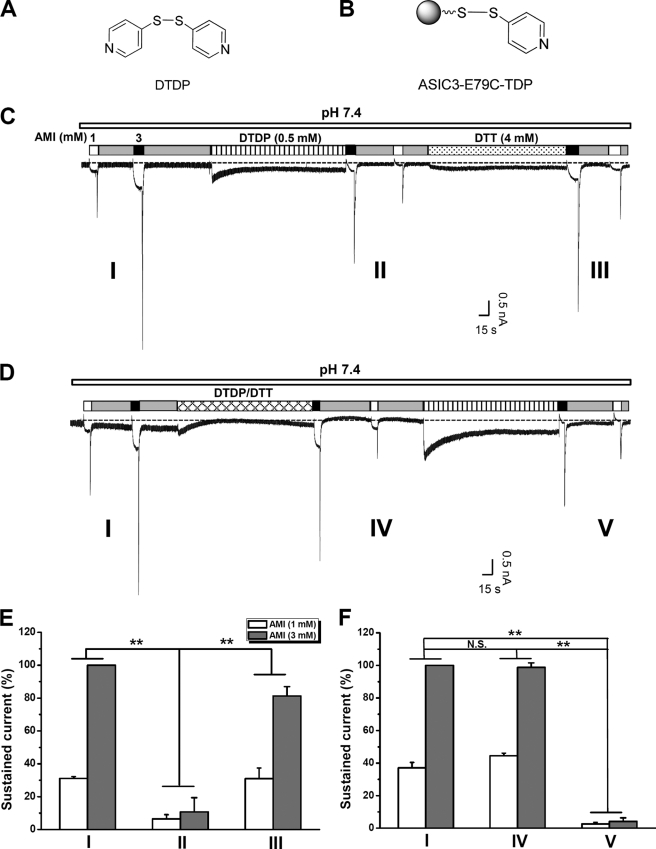FIGURE 6.
Effects of DTDP on AMI stimulation of ASIC3E79C channels. A, structure of DTDP. B, illustration of TDP covalently linked to E79C via a mechanism of Ellman's reaction. C, typical recording showing the effect of DTDP (0.5 mm, pH 7.4) on the AMI stimulation of ASIC3E79C channels. AMI at 1 and 3 mm evoked inward currents from CHO cells expressing ASIC3E79C. Following DTDP treatment, a successive administration of AMI failed to induce ASIC3E79C channel activation because of the formation of E79C-S-S-TDP complexes preventing AMI binding. DTT (4 mm, pH 7.4, and 5 min) restores channel activation by AMI presumably by breaking the disulfide bond in the E79C-S-S-TDP complexes, rendering the channel responsive to subsequent AMI application. D, cotreatment of DTDP (0.5 mm, pH 7.4) and DTT (4 mm, pH 7.4) preserves channel activation by AMI. After washout of DTDP/DTT, DTDP treatment again abolished AMI activation of ASIC3E79C channel because of steric effects. E and F, statistical analysis of effects of DTDP on the sustained currents induced by AMI. Shown in E and F are pooled data from experiments in C and D, respectively. The dashed lines in C and D represent the base-line level. Data points are means ± S.E. of six measurements of sustained currents normalized to that induced by AMI (3 mm) before DTDP treatment. **, p < 0.001, demonstrating the significant difference in the sustained currents induced by both 1 and 3 mm AMI between the two different groups as indicated. N.S., not significant.

